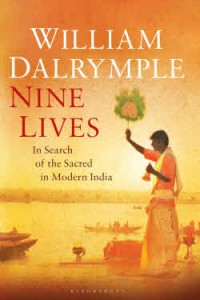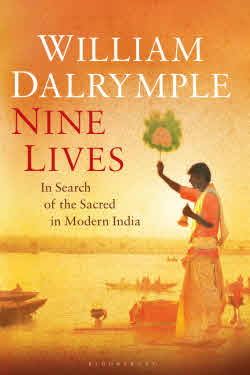by Anupama Krishnakumar
[box]Nine Lives by William Dalrymple is an insight into the diverse religious practices followed in India. More importantly, it is a collection of stories that are moving and revealing. Read it for sure, suggests Anupama Krishnakumar.[/box] They say, “Never judge a book by its cover.” But, the brilliantly designed cover of ‘Nine Lives’ is one the reasons why I picked up the book. And of course, coming from a travel writer like ‘William Dalrymple’, I didn’t think twice before buying it.
They say, “Never judge a book by its cover.” But, the brilliantly designed cover of ‘Nine Lives’ is one the reasons why I picked up the book. And of course, coming from a travel writer like ‘William Dalrymple’, I didn’t think twice before buying it.
The beauty of ‘Nine Lives’ is its astoundingly simple, yet powerfully expressive language that not even once fails to construct the scene in front of your eyes. In the first story, ‘The Nun’s tale’, Dalrymple describes the ‘White-clad’ Digambara nun, ‘Prasannamati Mataji’ as ‘a tender, slender, barefoot figure..’ and you don’t for a second, slip in your attention as the author goes on to describe how she ‘gently wiped each step with her peacock fan..’ as she ascended the steps.
Dalrymple has presented to us a world that is in stark contrast to the booming India that we witness in the urban areas; a world absolutely different from the cities that are fast changing and seeing development at such an accelerated pace!
These are stories that surprise us at times and startle us at other moments because of the thoroughly demanding and unbelievable practices – ones you wouldn’t really expect to find in the day-to-day life of an individual. The stories follow a definite narrative structure. Dalrymple skillfully combines travel writing, story and history in each of the tales – presenting a complete picture. The dialogue oriented presentation of the personal tales of the people gives the stories a tremendous ‘in-conversation’ feeling, that most of the time you feel you have the person sitting right in front of you, narrating his or her story. Many a time, I found myself feeling the way one would, when one falls silent listening to a person’s disturbing sorrows and troubles.
India’s religious diversity is the book’s primary strength. Dalrymple has travelled to places in Kerala, Karnataka, Tamil Nadu, West Bengal, Rajasthan and Punjab, meeting people who speak different languages. The result – the stories present such a wide array of religious practices, rituals and beliefs. The beauty however is that, there are such striking similarities in what these practices ultimately seek to achieve. They aim to attain enlightenment, and in few cases, offer solutions to the miseries and problems of fellow human beings. But, most importantly, they reinforce the devotion and unshakeable belief that people have in a Supreme Power.
The people in these stories have seen the tougher side of life, for most part of their existence and if there is one thing that they look back or talk about with a positive spirit – it is their dedication to their Gods. Be it Hari Das, the Theyyam dancer in the ‘Dancer of Kannur’, who feels that the best part of a year is the two months when he takes up Theyyam dancing or Mohan Bhopa in ‘The Singer of the Epics’, who says that Pabu is there to see him through the worst of his troubles or Lal Peri in ‘The Red Fairy’, who without any doubt, believes that Lal Shahbaz Qalander will rescue her from the worst of situations – their strong belief in the Divine is something that is sure to strike the reader. In a way, these are poignant tales. The stories have a certain sadness about them – but the sad reality is conveyed so subtly without any big noise that it succeeds in moving you even more.
Two stories that moved me personally were the ‘The Nun’s tale’ and the ‘The Monk’s tale’. Somehow, they made me feel strangely empty and helpless.
The ‘Sallekhana’ or the ritual of fasting to death, in ‘Nun’s Tale’ left me feeling shocked. Just as Dalrymple, I found myself questioning, “But, isn’t that suicide?”. And, I was fascinated, just as the author was, when the mataji says, “You have to understand that for us, death is full of excitement.” In ‘The Monk’s Tale’, I really was moved when Passang, the monk, says, “The next day I rang home. After thirty years, I was able to speak to my brother..” and when Darlymple asks, “But wouldn’t you like to go back to Tibet, even just to see it one last time?” and when I read Passang’s reply, “I am sad that I have separated from my country and my family and that even now, in my old age, I am not back home. ..I am now seventy four. I am still in exile, and Tibet is still not free.”, I closed the book and switched off the light, sighed and brushed away an invisible tear and fell asleep.
William Dalrymple’s ‘Nine Lives’ is well-researched, touching, revealing and soul stirring.
Read it.
[facebook]share[/facebook] [retweet]tweet[/retweet]




